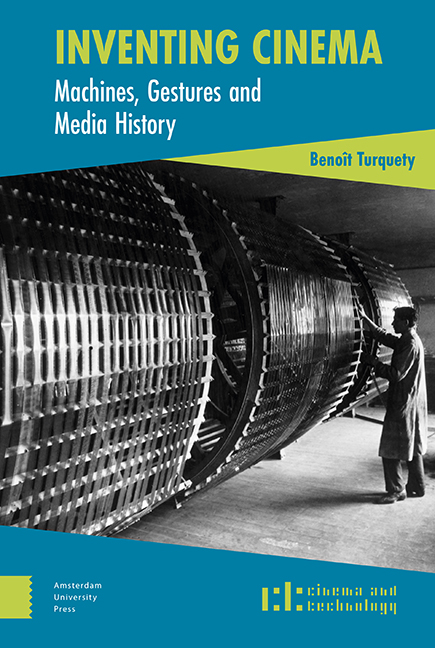Refine search
Actions for selected content:
6791 results in Communications and signal processing
6 - Bent functions and plateaued functions
-
- Book:
- Boolean Functions for Cryptography and Coding Theory
- Published online:
- 31 October 2020
- Print publication:
- 07 January 2021, pp 189-283
-
- Chapter
- Export citation
1 - Introduction to cryptography, codes, Boolean, and vectorial functions
-
- Book:
- Boolean Functions for Cryptography and Coding Theory
- Published online:
- 31 October 2020
- Print publication:
- 07 January 2021, pp 1-26
-
- Chapter
- Export citation
3 - Boolean functions, vectorial functions, and cryptography
-
- Book:
- Boolean Functions for Cryptography and Coding Theory
- Published online:
- 31 October 2020
- Print publication:
- 07 January 2021, pp 76-150
-
- Chapter
- Export citation
Acknowledgements
-
- Book:
- Boolean Functions for Cryptography and Coding Theory
- Published online:
- 31 October 2020
- Print publication:
- 07 January 2021, pp x-xi
-
- Chapter
- Export citation
7 - Correlation immune and resilient functions
-
- Book:
- Boolean Functions for Cryptography and Coding Theory
- Published online:
- 31 October 2020
- Print publication:
- 07 January 2021, pp 284-317
-
- Chapter
- Export citation
2 - Generalities on Boolean and vectorial functions
-
- Book:
- Boolean Functions for Cryptography and Coding Theory
- Published online:
- 31 October 2020
- Print publication:
- 07 January 2021, pp 27-75
-
- Chapter
- Export citation
9 - Algebraic immune functions
-
- Book:
- Boolean Functions for Cryptography and Coding Theory
- Published online:
- 31 October 2020
- Print publication:
- 07 January 2021, pp 321-351
-
- Chapter
- Export citation
5 - Functions with weights, Walsh spectra, and nonlinearities easier to study
-
- Book:
- Boolean Functions for Cryptography and Coding Theory
- Published online:
- 31 October 2020
- Print publication:
- 07 January 2021, pp 164-188
-
- Chapter
- Export citation
Notation
-
- Book:
- Boolean Functions for Cryptography and Coding Theory
- Published online:
- 31 October 2020
- Print publication:
- 07 January 2021, pp xii-xiv
-
- Chapter
- Export citation
Contents
-
- Book:
- Boolean Functions for Cryptography and Coding Theory
- Published online:
- 31 October 2020
- Print publication:
- 07 January 2021, pp v-viii
-
- Chapter
- Export citation
References
-
- Book:
- Boolean Functions for Cryptography and Coding Theory
- Published online:
- 31 October 2020
- Print publication:
- 07 January 2021, pp 498-556
-
- Chapter
- Export citation
Preface
-
- Book:
- Boolean Functions for Cryptography and Coding Theory
- Published online:
- 31 October 2020
- Print publication:
- 07 January 2021, pp ix-ix
-
- Chapter
- Export citation
8 - Functions satisfying SAC, PC, and EPC, or having good GAC
-
- Book:
- Boolean Functions for Cryptography and Coding Theory
- Published online:
- 31 October 2020
- Print publication:
- 07 January 2021, pp 318-320
-
- Chapter
- Export citation
Index
-
- Book:
- Boolean Functions for Cryptography and Coding Theory
- Published online:
- 31 October 2020
- Print publication:
- 07 January 2021, pp 557-562
-
- Chapter
- Export citation

Inventing Cinema
- Machines, Gestures and Media History
-
- Published by:
- Amsterdam University Press
- Published online:
- 21 November 2020
- Print publication:
- 17 October 2019
-
- Book
- Export citation
4 - Deep Learning Models
- from Part II - Advanced Studies
-
- Book:
- Machine Learning for Speaker Recognition
- Published online:
- 26 June 2020
- Print publication:
- 19 November 2020, pp 115-168
-
- Chapter
- Export citation
3 - Machine Learning Models
- from Part I - Fundamental Theories
-
- Book:
- Machine Learning for Speaker Recognition
- Published online:
- 26 June 2020
- Print publication:
- 19 November 2020, pp 36-112
-
- Chapter
- Export citation
Part II - Advanced Studies
-
- Book:
- Machine Learning for Speaker Recognition
- Published online:
- 26 June 2020
- Print publication:
- 19 November 2020, pp 113-114
-
- Chapter
- Export citation
Part I - Fundamental Theories
-
- Book:
- Machine Learning for Speaker Recognition
- Published online:
- 26 June 2020
- Print publication:
- 19 November 2020, pp 1-2
-
- Chapter
- Export citation
Index
-
- Book:
- Machine Learning for Speaker Recognition
- Published online:
- 26 June 2020
- Print publication:
- 19 November 2020, pp 307-310
-
- Chapter
- Export citation
